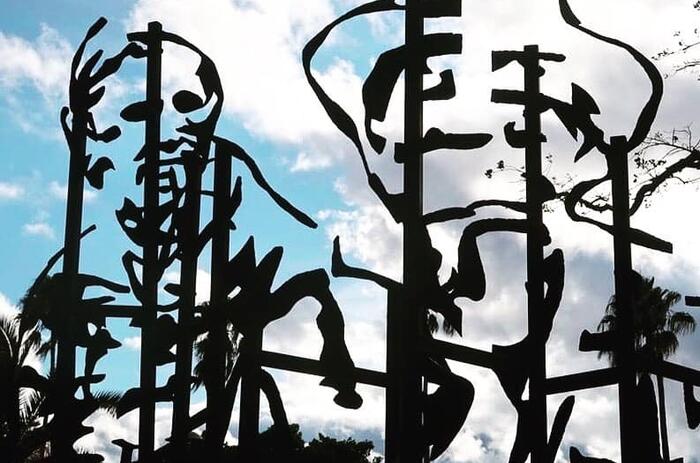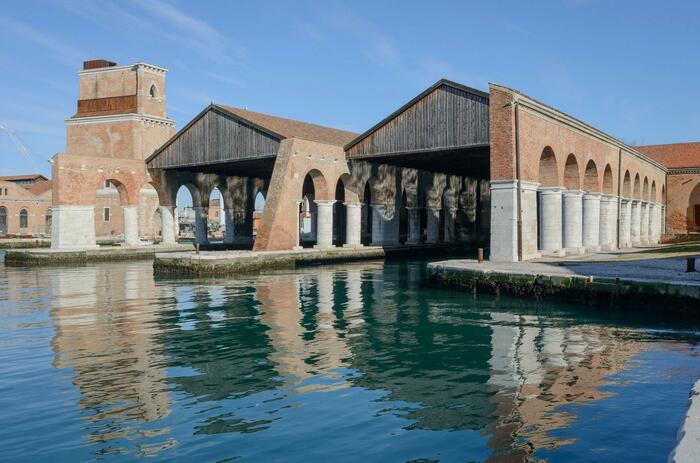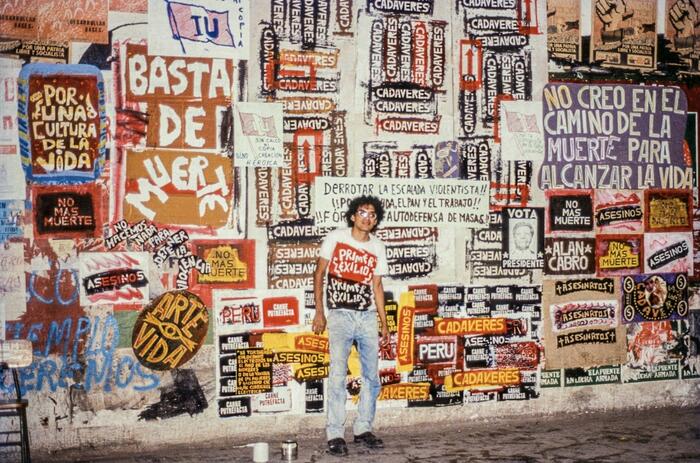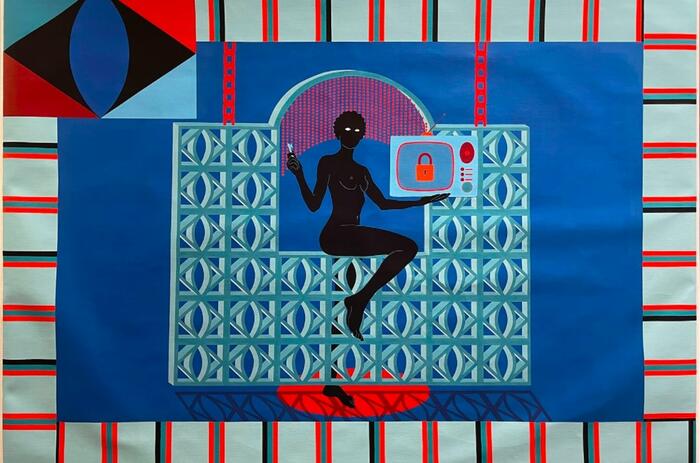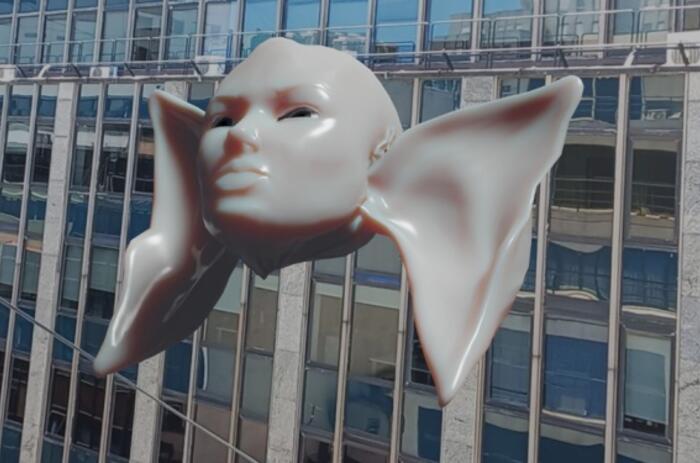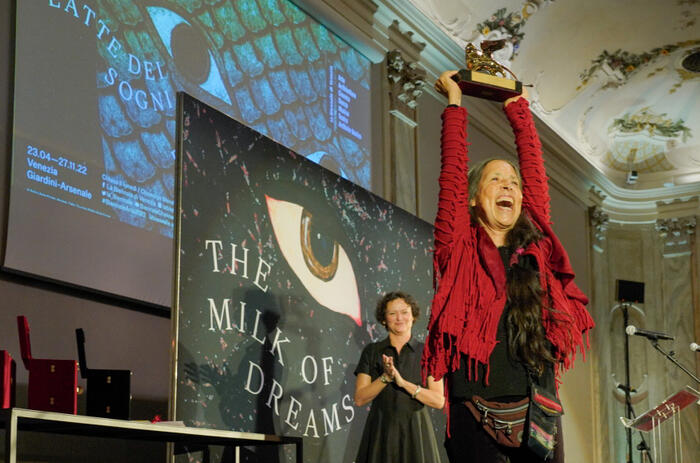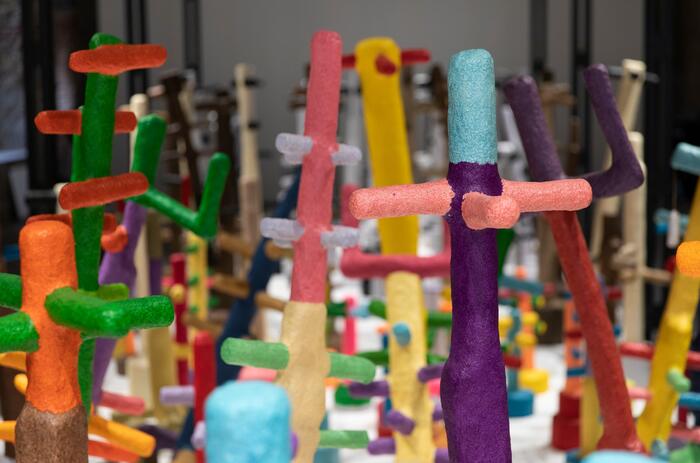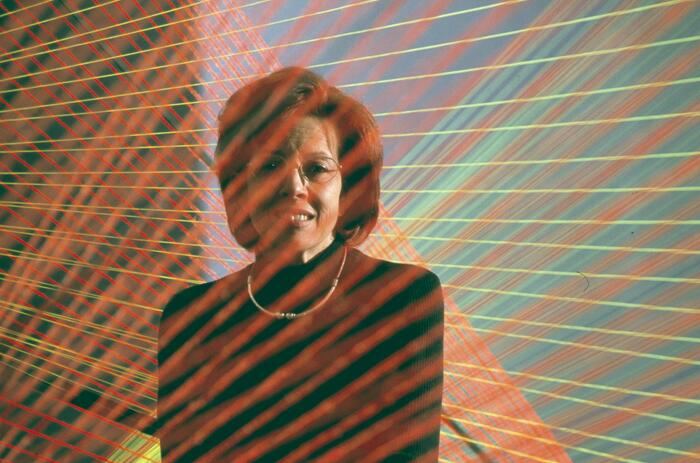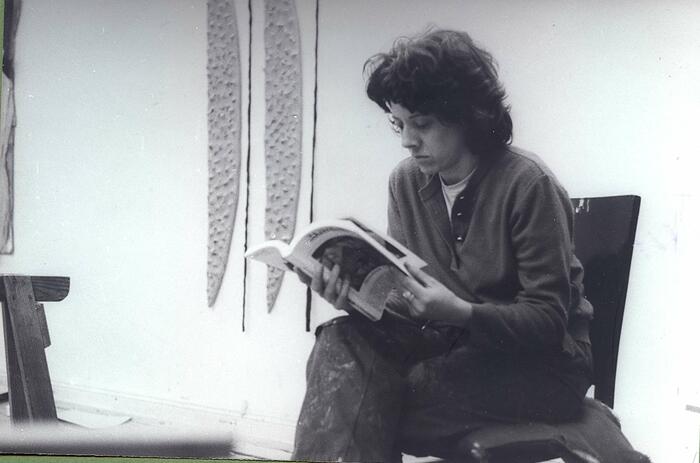THE “BIENNIAL WITHOUT PUBLIC” (2020) IN SANTA CRUZ AND AN OUTLINED PATH (PART 2)
If the São Paulo Biennial in Brazil once had what was called the “Biennial of the Void” (2008), it could be said, bridging the gap, that Santa Cruz de la Sierra involuntarily experienced the “Biennial without public” (2020).
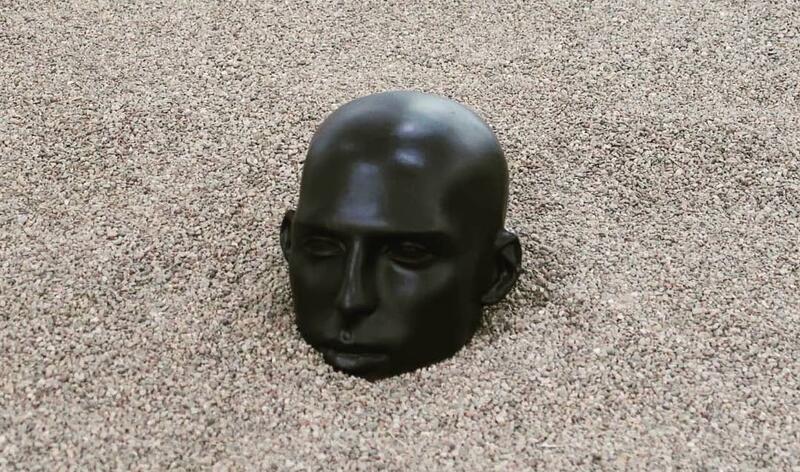
Wrapped in those thoughts, I noticed that the square was deserted again. On my way out, I was able to appreciate the mural Untitled by Graciela Harper (Argentina, 1966) that brightened up the south wall of the Manzana 1 Espacio de Arte building; the artist is known for her explorations in public space playing with geometry, color and the fluidity of shapes in space. It was after 11 in the morning and recess was going to end. We all had only one morning a week to move around our area ofthe city.
-
XXI Bienal Internacional de Arte de Santa Cruz, Lo Público: Fuera de cubo blanco (2019-2020)
-
Graciela Hasper, Untitled, 2020. Paint on wall. 30 x 37 ft. XXI Bienal Internacional De Arte De Santa Cruz De La Sierra, Santa Cruz, Bolivia.
-
Graciela Hasper, Untitled, 2020. Paint on wall. 30 x 37 ft. XXI Bienal Internacional De Arte De Santa Cruz De La Sierra, Santa Cruz, Bolivia.
-
Graciela Hasper, Untitled, 2020. Paint on wall. 30 x 37 ft. XXI Bienal Internacional De Arte De Santa Cruz De La Sierra, Santa Cruz, Bolivia.
-
Tradición Mojón con cara, en una céntrica calle de Santa Cruz de la Sierra // Mojón tradition with face, in an eccentric street of Santa Cruz de la Sierra
Bordering the Casco Viejo, in the Plaza del Estudiante located on the First Ring, I visited on my way back the sculptural intervention Praxis, by the artist Alfredo Román. It was a set of three giant human femurs placed parallel in the open space, in the manner of identical Ionic columns. The spatial context of its location was marked by the central building of the Municipal Library in the background and the Palace of Justice in front. Few cars circulated on the avenue. Police occasionally stopped drivers at traffic lights to check their traffic permits; A few passers-by in the area hurried along with large shopping bags. No one seemed to notice that right there, right under their noses, was a conceptual art show that was in dialogue with the architectural history of the city. An electricity charged with emptiness and abandonment ran through the veins, while the pink leaves fallen from the trees gave an autumn tone to the roads. The great achievement of the XXI Biennial with this work, as Narda Alvarado pointed out in an article published in Artishock Magazine [2], is that it was placed as an asset of the city, being "the only and the first work of conceptual character permanently housed in a public space in Bolivia”. (Alvarado: 2020)[3]. This palpable achievement, however, contrasts with the indifference in which the work has remained in the hustle and bustle of the area.
Looking forward
What is left of the XXI Santa Cruz Art Biennial? An intelligent proposal that did not end up being carried out as wished. Among its achievements should be considered the realization of the virtual conversation with the Uruguayan artist Luis Camnitzer, in addition to his exhibition; the permanent placement in the public space of Santa Cruz of the sculpture Praxis, and the permanence of Harper's mural in Manzana Uno; Installation 57 by Roberto Valcárcel (1951-2021), the last one that the artist managed to exhibit in his lifetime; the learning about space management with the municipality, contributed by works such as Salt Texts by Andrés Olmos, Somos by Raquel Schwartz and Pasado pisado by Alejandro Ugalde, which tore beyond the surface of the public; the unnoticed, but suggestive Turbión del Sur intervention in the Casa de la Cultura curated by María Teresa Rojas. PS: An interesting show about the Middle East was The Fourth Wall curated by Mo Reda.
The final taste left in the mouth was probably the same as a tourist in Colombia having a cup of decaffeinated coffee. Because an art biennale without an audience is a banquet without guests. This is such, Art Biennales are organized in cities around the world as a regional acceleration strategy, of connection between artists, curators and managers between cities, but it must also consider among its lines of action the accelerations it facilitates in terms of arrival to the public outside the contemporary art circuit in a city, that is, to those who do not attend the opening vernissages during the year, nor do they feel that they have anything to do with the institutional cultural world.
The strategy proposed by the curators of Kiosko Galería was not an innovation –to respond to those who object to the lack of novelty–, but its merit lay in the moment in which they proposed it for the local scene; In addition, the year 2019 was full of news around the world that reported the taking of the streets due to citizen nonconformity, multiple expressive protests. In the artistic world, see the experience of multiple contemporary art projects that are carried out in public spaces in the world, from the Barranquilla Biennial, through the South Biennial to Documenta in Kassel. It was interesting to propose it for Santa Cruz, a city that invites you to experience the open sky.
Thus, the curatorship Lo público. Fuera de cubo blanco (The public. Outside the white cube) consisted of expanding the experience of this local anomaly called contemporary art for the people of Santa Cruz, taking it to the streets of the center, where what exists is no longer the public but the undifferentiated mass of passers-by. This opened the biennial towards a less predisposed gaze, where the passer-by has not made any kind of pact with the artist, or what we call the implicit contract by which the viewer accepts their passive role, granting the other the role of the artist, that is to say of the one who must propose the action, put in a rectangle the subject to which they will pay attention for a certain time. That is an invisible contract that has real effects, that the space itself is in charge of demarcating by setting the tone. In cinema we observe two basic elements of the experience of watching a film: the first is the film itself, which invites us to buy a ticket; the second is the construction of the climate that surrounds the film and that is given by the dark room and the degraded seats, it is the environment that the film industry has built to enjoy a film. As for soccer, the content is a specific match with two teams that compete, but the other thing that comes hand in hand is the creation of the atmosphere or the surrounding climate, which happens only inside a stadium, in an unrepeatable way according to each city, team, championship. Both are one, content and atmosphere go together in the cinema-experience, as in the football-experience, or the concert-experience, and several others.
The white-cube model is the choice of a type of atmosphere or environment for the visual arts among several possible ones. But the vast majority of visitors to museums, galleries and cultural centers in Bolivia still believe, or at least act, as if that were the only one; they take it for granted that seeing a painting or sculpture goes hand in hand with the white-walled, neutralized, aseptic room. So it is very good, as Bolivian managers and curators, that we are aware of the gap that exists in the art training that viewers still receive from when they are in school until they become adults. Much of the complicity with this delay stems from the lack of research and curatorship in the vast majority of local exhibition spaces. Therefore, one of the first questions that we need to discuss in the promotion of local visual arts is the types of spaces and the kind of atmospheres that are created for the works. The best curators in Bolivia have not stopped going through this matter, trying new possibilities with creative museographies in unsuspected spaces.
In this sense, the next art biennial organized in Santa Cruz, in order to have a sense of sequence and growth, would have to prolong the spirit of leaving the white cube of the cultural institution, for example to intervene in the educational process of art in schools. You should ask yourself how to involve the Ministry of Education, and the teachers and directors of colleges and schools in Santa Cruz. Another issue will be to investigate possible parallels between the student classroom and the showroom. The research artist Tatiana Fernández, a Bolivian based in Brazil, has made great advances in this line of work, within what is called the pedagogical turn of the arts. And perhaps Valcárcel himself did not conceive his teaching process in university teaching as an extension of a performative process of his work? There are already projects in the country that are crossing the art-education and spectator training bridge, which deserve the attention of the future organizers of the Santa Cruz Art Biennial.
Since the essential job of contemporary art is not simply to take something and extract it from its original or customary context, but also to know how to relocate it in another dimension of urban, social, political, cultural, religious, affective life with a sense of real impact in certain sectors of the population.
[2] Narda Alvarado, “Santa Cruz Biennial: Art among the public, institutions and the uncertain future”. Artishock contemporary art magazine. Posted on 06/23/2020.
[3] Alvarado also notes in the aforementioned article that this achievement constitutes "a kind of foundational pillar that opens the possibility that, in the future, contemporary conceptual art will have more acceptance or popularity among the authorities of the municipality, and acquire greater visibility. public, especially among those citizens who are completely unaware of it”.

